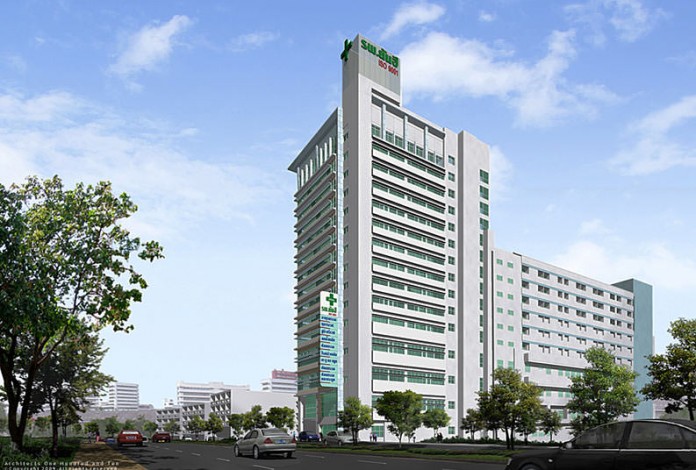EYELIDS SURGERY
Blepharoplasty
Eyelids Surgery
While we’d all love to have fresh, young-looking faces for our entire lives, the truth of the matter is that age creates bags and wrinkles under the eyes that can cause some people to feel less confident about their appearance.
But aging doesn’t have to take away beauty or confidence, because there is a procedure called blepharoplasty which can correct baggy lower eyelid, lower eyelid wrinkles and even deformities in the tear trough.
Read on to learn more about blepharoplasty and whether this surgery is right for you.

Recommended hospitals
Top Hospitals according to quality, ratings, waiting times and more
Get a personalized quote for free
Our care team will support you all the way
During a blepharoplasty, the surgeon will remove the excess fat from the baggy eyelid and tighten up the muscles underneath. They will remove excess skin from the area, which helps to correct wrinkles and bags that make us look older.
The surgery is minimally invasive and safe.
Before having a blepharoplasty, it’s very important to let your doctor know about any medications or vitamins you’re taking, as well as any allergies or medical conditions.
You should stop taking any blood-thinning medications like Aspirin or Ibuprofin for 2 weeks prior to the surgery. This will prevent any abnormal bleeding during surgery.
If you suffer from hypertension, it’s important to get your blood pressure under control and at a normal level before going into surgery.
Make sure not to eat or drink anything 6 hours before surgery.
After a blepharoplasty surgery, you will have to keep a dressing over the eylid for 3 days, cleaning the sutured area twice a way as recommended by your doctor.
Take the oral antibiotics prescribed by your doctor, as well as anti-swelling and pain relieving tablets.
Use cold compresses in the first 3 days prior to surgery to prevent further bleeding. After the first 3 days, switch to a warm compression which will reduce swelling in the area.
It’s important to wait 3 days for a warm compress, because if applied too soon, it can actually increase bleeding and swelling.
You’ll get your sutures taken out 5 or 7 days after surgery.
Make sure to attend all your follow-up appointments to make sure recovery is going smoothly. Until the sutures are removed, keep the suture area dry and away from sweat and water.
Don’t partake in any heavy physical activity for the first week, as you need bed rest in a place that’s cool and dry.
For the first few days of recovery, lay your head above your body to reduce the amount of blood to the wound.
While blepharoplasty is extremely safe, there are risks associated with any kind of surgical procedure.
The most common risks with this type of surgery are bruising, swelling, bleeding, scarring and infection.
However, these risks are greatly reduced by taking care during recovery and following all instructions by your doctor.
- SURGICAL PROCEDURE
-
During a blepharoplasty, the surgeon will remove the excess fat from the baggy eyelid and tighten up the muscles underneath. They will remove excess skin from the area, which helps to correct wrinkles and bags that make us look older.
The surgery is minimally invasive and safe.
- PRE-OPERATIVE CARE
-
Before having a blepharoplasty, it’s very important to let your doctor know about any medications or vitamins you’re taking, as well as any allergies or medical conditions.
You should stop taking any blood-thinning medications like Aspirin or Ibuprofin for 2 weeks prior to the surgery. This will prevent any abnormal bleeding during surgery.
If you suffer from hypertension, it’s important to get your blood pressure under control and at a normal level before going into surgery.
Make sure not to eat or drink anything 6 hours before surgery.
- POST OPERATIVE CARE AND RECOVERY
-
After a blepharoplasty surgery, you will have to keep a dressing over the eylid for 3 days, cleaning the sutured area twice a way as recommended by your doctor.
Take the oral antibiotics prescribed by your doctor, as well as anti-swelling and pain relieving tablets.
Use cold compresses in the first 3 days prior to surgery to prevent further bleeding. After the first 3 days, switch to a warm compression which will reduce swelling in the area.
It’s important to wait 3 days for a warm compress, because if applied too soon, it can actually increase bleeding and swelling.
You’ll get your sutures taken out 5 or 7 days after surgery.
Make sure to attend all your follow-up appointments to make sure recovery is going smoothly. Until the sutures are removed, keep the suture area dry and away from sweat and water.
Don’t partake in any heavy physical activity for the first week, as you need bed rest in a place that’s cool and dry.
For the first few days of recovery, lay your head above your body to reduce the amount of blood to the wound.
- RISKS AND COMPLICATIONS
-
While blepharoplasty is extremely safe, there are risks associated with any kind of surgical procedure.
The most common risks with this type of surgery are bruising, swelling, bleeding, scarring and infection.
However, these risks are greatly reduced by taking care during recovery and following all instructions by your doctor.
Need Expert Advice?
Our consultants are here to help from
Mon – Fri 9am to 6pm ICT
Our service is free. You never pay us any fees or deposits. You only pay for the surgery and directly to the hospital.




 Chat with us
Chat with us
 Chat with Us
Chat with Us